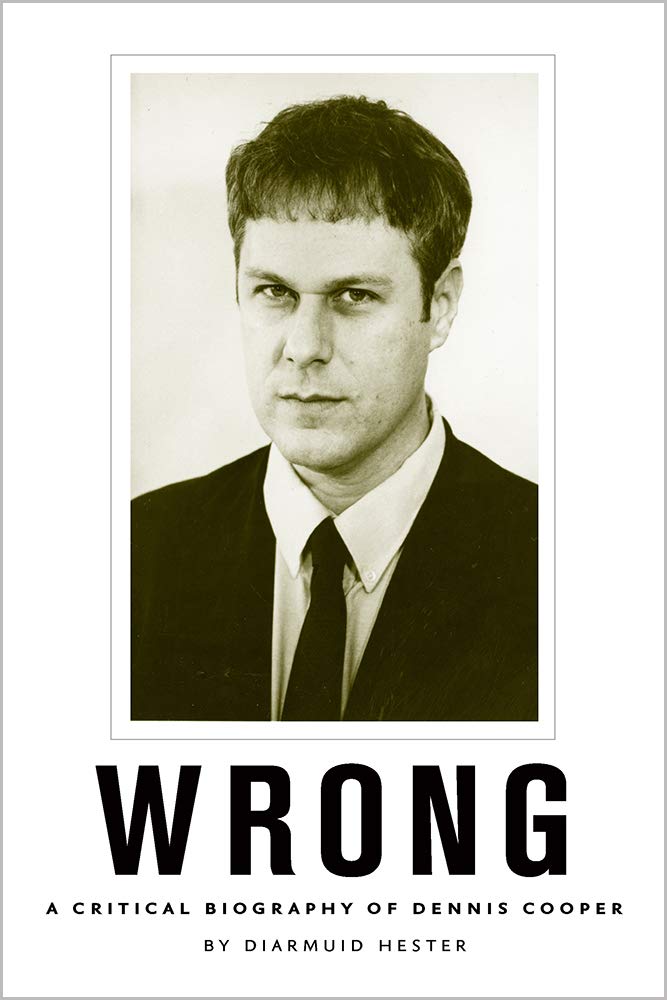* (restored)
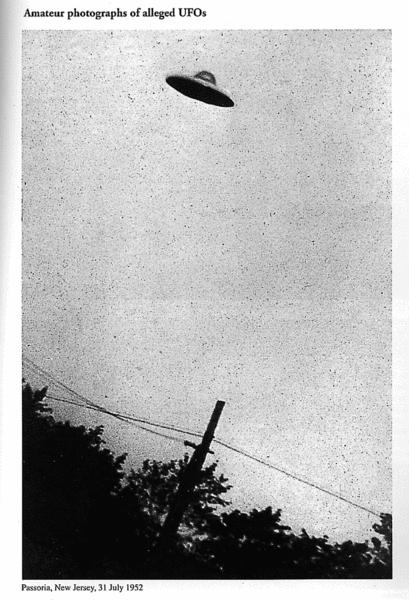
UFOs, extraterrestrials, ghosts, poltergeists, vampires, zombies, monsters, witches, werewolves, devils, or, to quote the subtitle of the lovely literary freak show called The Wonderful Magazine, Ive always been extremely interested in the Marvelous Chronicles of Extraordinary Productions, Events, and Occurrences, in Nature and Art: Consisting Entirely of Matter Which Comes Under the Denomination of MIRACULOUS! QUEER! ODD! STRANGE! SUPERNATURAL! WHIMSICAL! ABSURD! OUT OF THE WAY! And UNACCOUNTABLE! as Im sure a number of (if not all) of you are. So today is devoted to the mystery of UFOs; but because theres so much information out there about them, here are five sort of random things to blow out your brains on today.
1. The Bible and Flying Saucers

Among the literature of UFOs there are an extraordinary number of books detailing the influence of extraterrestrial life upon human religionespecially ancient religion, such as Aztec, Mayan, and Egyptian but also, not surprisingly, the biblical tradition, and in particular Christianity. One exceptionally interesting study Ive read on this connection is Barry Downing’s way out there The Bible and Flying Saucers: An Inquiry into Possibilities. Downing believes that UFOs are real and have existed for centuries and throughout the book explains that many events once though miraculous may have their best explanation is natural science and the existence of extraterrestrials. He discusses everything from Moses parting the Red Sea to the transfiguration of Christ (he suggests Jesus was lifted up into space by some sort of UFOa space cloud). In chapter five (my favorite), Where is Heaven? Downing attempts to locate heaven in the physical universe, and uses passages from the bible as his launch pad into long, complex arguments about whether heaven is on another planet or another plane of existence (its on another plane of existence) and whether it is visible or invisible (invisible). Ultimately though, because Downing is only positing another theory among the millions of biblical interpretations, he ends up deliciously subverting the belief that the bible contains empirical evidence and truth not only about the workings of the universe but reality itself.
2. George Adamski (1891-1965)
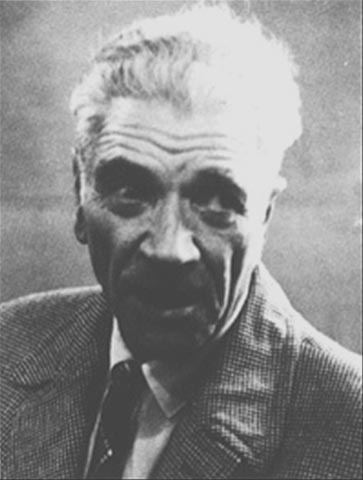
Of the thousands upon thousands of purported UFO contactees, one of the most famous accounts of is that of George Adamski. Adamski is credited in many circles as the pioneer of extraterrestrial contact and UFO photography. After founding his own church in 1934 where he lectured about cosmic philosophy, Adamski wrote his first and only science-fiction novel in 1949 entitled Pioneers of Space: A Trip to the Moon, Mars and Venus. He later plundered the book to write his bestselling (though now sadly out of print) nonfiction book, Flying Saucers Have Landed in 1953.
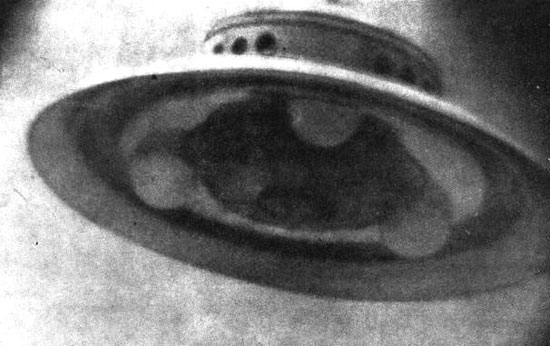
Of Adamski’s many claims of contact, the most famous supposedly occurred in November 1952 when Adamski and some members of his church went out into the Californian desert, where they supposedly witnessed a flying saucer land. Adamski claimed he telepathically communicated with an alien from the spaceship. Supposedly the alien was named and was from Venus and was worried about the advancement of nuclear weapons. Adamski claimed he took plaster casts of the extraterrestrials feet but theres no evidence of this. Throughout his life, Adamski maintained his claims of contact, including being taken for flights on UFOs countless times, and even being taken around to the back side of the of the moon where he saw cities, UFO landing strips, and mountains covered with trees and snow. Though theres no evidence of this either. Adamski died of a heart attack in 1965 and according to Frank Edwards, author of Flying Saucers, Serious Business, at the time of [Adamskis] death he was offering to teach people how to visit the planets Venus and Mars by self-hypnosis for fifty dollars.

(Photo: On August 6th, 1997, a UFO seen by many witnesses in Mexico City and was caught on tape by one of these witnesses (who used a Sony Digital Camera). The UFO looks like a flying saucer as described by many UFO viewers. The day was said to be very hazy and no aircraft were cleared to depart except for two news helicopters. The video was received by Jamie Maussan who later broadcast it. The 24 second tape was seen by millions of viewers worldwide. It was then taken to a video analysis company in Phoenix and Jim Dilettoso, who had viewed over 5,000 other UFO videos, believed it was the best he had ever seen.)
3. List of Things Mistaken for UFOs
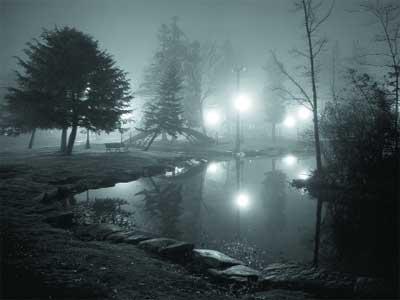
(Photo: Elm Park in Worcester, Massachusetts. Those lights are not in fact the lights of a UFO but street lamps illuminating the sidewalk at the far end of the park.)
A list of things commonly mistaken for UFOs compiled in 1969 for a UFO symposium sponsored by the American Association for the Advancement of Science. Luminous weather balloons, non-luminous weather balloons, meteors, comets, moon, artificial satellites, planets, military magnesium flares, military test craft, military aircraft, clouds, rocket firings, hot air balloons, satellite, satellite re-entry, sky-hook balloons (discontinued), hot air balloons, helicopters, planes, plane running lights, plane landing lights, planes reflections of the sun, contrails, hand gliders, flocks of migrating birds, individual birds, luminous birds, stars, advertising blimps, illuminated blimps, dirigibles, sewage disposal bubbles, soap bubbles, chain lightning, streak lightning, sheet lightning, ball lightning, plasma phenomena, kites, leaves, spider webs, paper and other debris, luminous electrical discharges, swarms of insects, swarms of moths, milkweed seeds, parachutes, fireworks, radio astronomy antennas, oil refineries, domed roofs, cigarettes tossed away, lighthouses, lakes and ponds, automobile headlights, auroral phenomena, noctilucent clouds, reflections of searchlights, St. Elmos fire, reflections from fog and mist including haloes, pilots halo, and ghost of the Brocken, sundogs, moondogs, superior mirages, inferior mirages, hallucinations, chimeras, internal camera reflections, photographic development defects, reflections from bright sources, electric lights, street lights, flashlights, aurora borealis, smoker lighting a pipe, unsteady stars, stars changing places, falling leaf effect, autostasis, astigmatisms, autokinetic effects, dust devils, park lights, weathervanes, icebergs, fires, angels, transformers, water tanks, tumbleweeds, failure to wear glasses, reflection from glasses, retinal defects, vitreous humor, anomalous radar refraction, radar scattering, radar ghost images radar, insects on radar, birds on radar, multiple radar reflections, light aberrations, beacon lights, and hoaxes.
4. UFOs as Experiences of a Psychoid Nature

Of all the experiences in the transpersonal realm, those of a psychoid nature represent the greatest challenge to our everyday perception of reality. This is how Stanislav Grof begins the chapter Experiences of a Psychoid Nature in his book The Holographic Mind. In this chapter Grof discusses various Jungian archetypes that have a psychoid nature, which, with the help of Jung (who, interestingly, in 1979 wrote a fascinating book entitled Flying Saucers: A Modern Myth of Things Seen in the Skies), he defines as belonging neither to the realm of the psyche nor the realm of material reality. Instead they existed within a strange twilight zone between consciousness and matter. These archetypes include ghosts, poltergeists, synchronicities, acts of psychokinesisthe whole smorgasbord of the supernatural and paranormaland yes, UFOs.
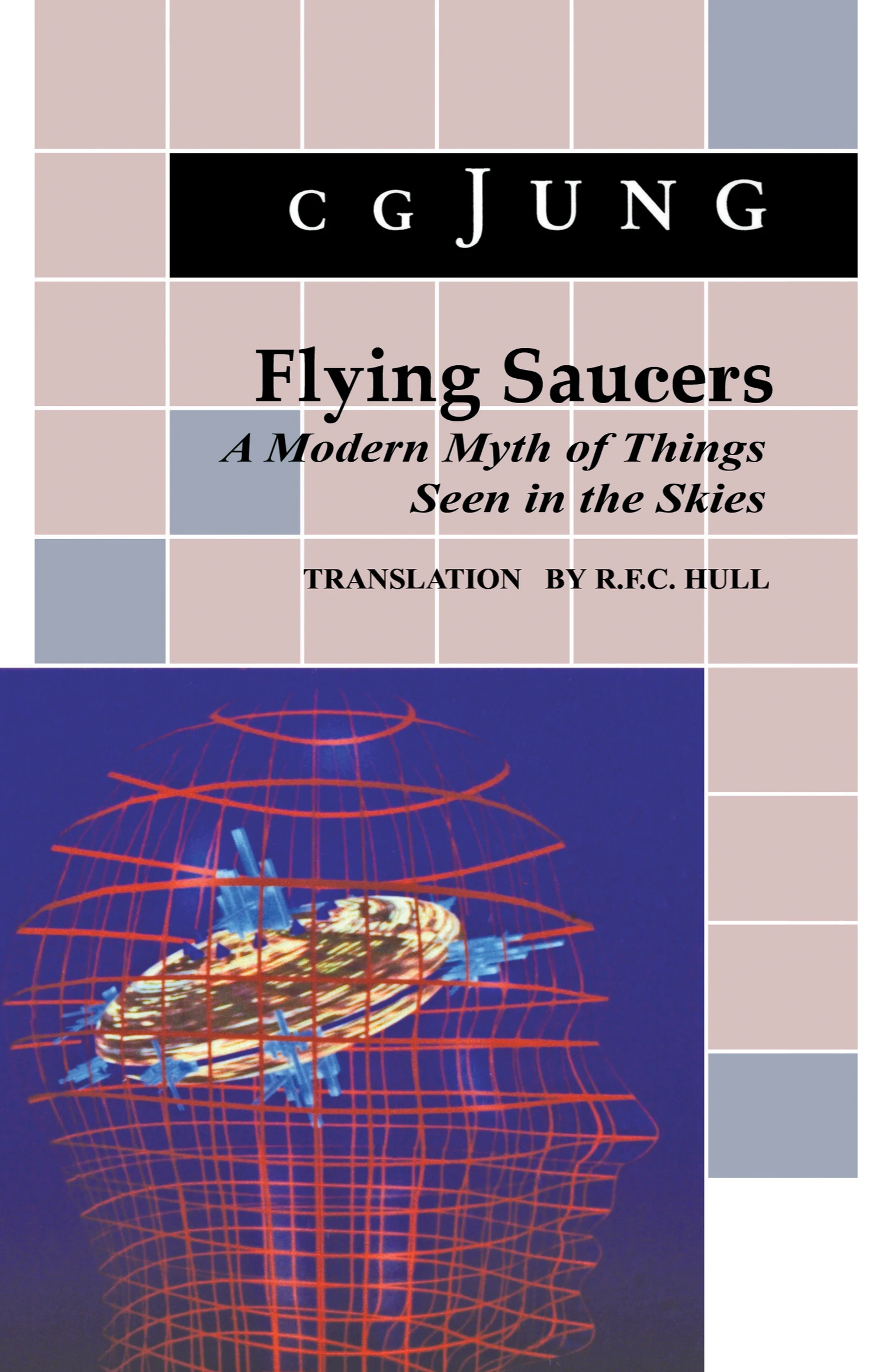
In the section of the chapter on UFOs, Grof discusses how discussion in this area is usually limited to the question of whether or not our planet has been visited by actual physical spacecraft from other parts of the universe. However, it seems that the situation is more complicated than that. Many UFO experiences seem to have a psychoid quality, meaning that they are not merely hallucinations, nor are they real in the ordinary sense of the word. It is quite possible that they represent strange hybrid phenomena, combining elements of mental life and the physical world. Grof goes on to explain this theory and talks about how UFO sightings are usually associated with visions of lights with supernatural radiance, similar to mystical raptures. The descriptions of the extraterrestrial visitors, alien cities, and spacecrafts certainly have parallels world mythology and thus could easily be explained to the collective unconscious. However that is only one aspect of the story. What interests us in our present context is the fact that in many instances, UFOs have left physical evidence behind, thus relegating them to consensus reality. It is this aspect that gives modern UFO phenomena a clear psychoid quality.

And here is where things really start to get out of hand. According to Grof, Jacques Vallée, a trained astrophysicist and UFO researcher, has concluded that at least some UFOs have a physical reality but these are simultaneously tied in with unusual inner experiences on the part of those who report the sightings. He concludes that the spaceships come from other dimensions of space and time that coexist with our own universe and may not be extraterrestrial in the usual sense of the word. Vallée speculates that the alien intelligences that produce and control the UFOs might be able to manipulate space and time in ways that are completely beyond our present ability to even imagine However, the UFOs are not products of the observers imagination; like Jungs spirit guides they exist quite independent of our consciousness. In other words, rather than being fabrications of our own imaginations, the extraterrestrials are using our consciousnesses as doorways into our everyday level of reality. But for what purpose? Grof doesnt answer this but instead articulates the problem these ideas pose. If UFOs do exist and are the product of the advanced technology we describe here, we are brought face to face with the convergence of two areas that we have always viewed as polar opposites: the rational world of advanced technology and the irrational world of fantasy.
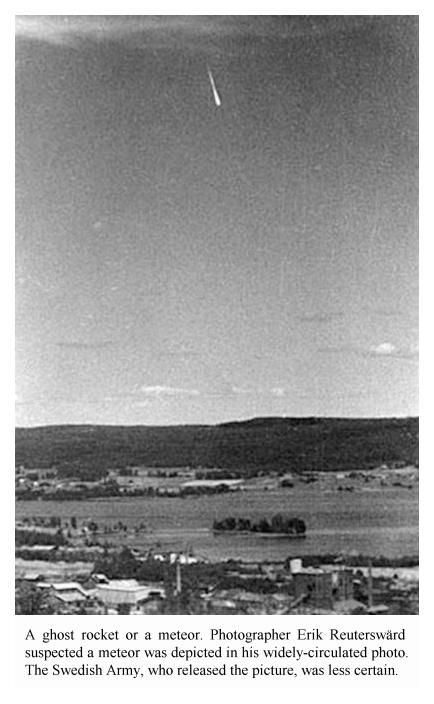
(Photo: In 1946, there were over 2000 reports of unidentified aircraft in the Scandinavian nations, along with isolated reports from France, Portugal, Italy and Greece, then referred to as Russian hail, and later as ghost rockets, because it was thought that these mysterious objects were Russian tests of captured German V1 or V2 rockets. This was subsequently shown not to be the case, and the phenomenon remains unexplained.)
5. The International Raelian Movement

You might remember the Raelian Movement from the news a few years ago. In 2002, the movement made headlines claiming to have cloned a human being, which they named Eve. And just this May you may have read in the paper about the Raelians newly formed Adopt a Clitoris Program to fight against sexual mutilation. Or maybe not In 1973 extraterrestrials known as the Elohim (which in Hebrew means those who come from the sky) contacted then French sports journalist Claude Vorilhon. But instead of expressing concerns about nukes and taking Vorilhon for tours of the galaxy (though he claims he was flown to the Elohims home planet in 1975 where he met Buddha, Jesus, Moses, and Muhammad), these ETs entrusted Vorilhon with the knowledge that life on earth was genetically manufactured (cloned) millennia ago by alien scientists from a saucerful of their own DNA. During this meeting Vorilhon was given the prophet name Rael, which means The Messenger of the Elohim, and ordered to spread this message to everyone in the world. In 1973 he dropped his journalism job, wrote Le Livre qui dit la vérité (The Book Which Tells the Truth) about the Elohim, and founded The International Raelian Movement. The Movement, now based out of Montreal, claims to have 60,000 plus members in over 60 countries. Not surprisingly, the movement is founded on the principles of love, pleasure knowledge and conscience, and freedom from money, sickness and war, and works to promote equality as well as harmony among the sexes.

In her in depth study of the Raelian Movement, Aliens Adored: Raels UFO Religion, Susan J. Palmer probes everything about the Raelians from their science of cloning to their radical sexual ethics. For example, in the chapter Sexy Angels and Amorous Aliens, Palmer writes about how Rael, following orders from the Elohim, basically set up a harem of women for the aliens. Rael encouraged his harem of beautiful young women [to cultivate] the arts of Eros and their seductive feminine charisma so as lure the aliens to earth to be their loversall in the ancient spirit of courtly love Palmer then quotes a passage from his 1978 book Les extra-terrestres mont emené sur leur planéte (Space Aliens Took Me to Their Planet), in which Rael writes about his visit the Elohims planet. During a tour of the planet, Rael was invited by a robot to sample alien sexual mores. I found myself transported in front of a machine used for fabricating robots, Rael writes. A luminous cube appeared in front of me A magnificent young brunette with wonderfully harmonious proportions appeared in three dimensions a second woman, blond and heady this time appeared in the luminous cube; a red-haired person and a magnificent black woman, then a very slim Chinese woman. Since Rael was unable choose between all these robots, he took them all back to his hotel. There, he writes, I had the most unforgettable bath I have ever had, in the company of those charming robots, absolutely submissive to my desires. If youd like to join the International Raelian Movement or learn more about their sexual politics as well as their message of peace and understanding, check out their website.

Links:
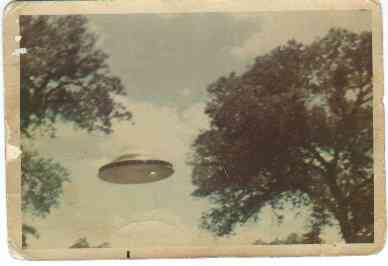
UFO Maps, sightings, as they happen
Wikipedias UFO page
A leading archive of UFO evidence including photo galleries and up-to-date sightings reports
Esotericas UFO Index
The Alien-UFOs.com Network Forum
UFO Religions:
The Brotherhood of the Seven Rays
The Seekers, also called The Brotherhood of the Seven Rays, were a group of rapturists or a UFO religion in mid-twentieth century Midwestern United States. The Seekers met in a nondenominational church, the group originally organized in 1953 by Charles Laughead, a staff member at Michigan State University in East Lansing, Michigan. They were led by Dorothy Martin from the Chicago area (also called Sister Thedra), who believed a UFO would save them from a catastrophe on December 21, 1954. They are believed to be the earliest UFO religion, and were the subject of the book When Prophecy Fails by Leon Festinger, in which Laughead was given the pseudonym Dr. Armstrong and Martin the name Marian Keech.
Festinger infiltrated the Seekers with the goal of studying their cognitive reactions and coping mechanisms when their beliefs failed, a thought-process which Festinger named cognitive dissonance. When the UFO did not come, a majority of the members became convinced that the UFO would arrive on Christmas Eve, at which time their second disappointment produced even greater dissonance. In the book, Festinger and his colleagues write, “The experiences of this observer well characterize the state of affairs following the Christmas caroling episode—a persistent, frustrating search for orders.”[6] After this incident, many of the members returned home and abandoned their initial belief. Those who did not claimed that their group’s belief and faith had saved the world from the disaster the aliens had warned of.
Aetherius Society
The Aetherius Society is a new religious movement founded by George King in the mid-1950s as the result of what King claimed were contacts with extraterrestrial intelligences, to whom he referred as “Cosmic Masters”. The main goal of the believer is to cooperate with these Cosmic Masters to help humanity solve its current Earthly problems and advance into the New Age.
It is a syncretic religion, based primarily on theosophy and incorporating millenarian, New Age, and UFO religion aspects. Emphases of the religion include altruism, community service, nature worship, spiritual healing and physical exercise. Members meet in congregations like those of churches. John A. Saliba states that, unlike many other New Age or UFO religions, the Aetherius Society is for the most part considered uncontroversial, although its esoteric and millenarian aspects are sometimes ridiculed.
Ashtar Galactic Command
Ashtar (sometimes called Ashtar Sheran) is the name given to an extraterrestrial being or group of beings that a number of people claim to have channeled. UFO contactee George Van Tassel was likely the first to claim to receive an Ashtar message, in 1952. Since then, many different claims about Ashtar have appeared in different contexts. The Ashtar movement is studied by academics as a prominent form of UFO religion. Denzler observes that “in the long run, probably the most important person for the propagation and perpetuation of the contactee movement was George Van Tassel”. In 1947 Van Tassel moved to Giant Rock, near Landers in the Mojave Desert, California, where he established a large UFO Center. This became the most successful and well-known UFO meeting center of the time.
As one of the founding “fathers” of the modern religious ufologies, Van Tassel also created arguably the most prominent UFO group established in the US in the late 1940s and early 1950s, although not as influential or well-known today. This was the “Ministry of Universal Wisdom” begun in 1953, which evolved out of two previous groups he had organized at Giant Rock in the late 1940s. The organization investigated and encouraged the healing arts, but its prime focus was to collect and analyse UFO phenomena and interview ‘contactees’. Due to radio and television interest, Van Tassel became the most well-known promoter of contactee experiences and somewhat of a celebrity in the 1950s.
Cosmic Circle of Fellowship
Cosmic Circle of Fellowship was a mid-twentieth century UFO religion that claimed to offer interdimensional travel through deep relaxation. During the 1950s, it became connected with the contactee movement, people who believed they had been in contact with extraterrestrial beings. The Circle was founded by a postman named William R. Ferguson. Like almost every other mid-1950s contactee, Ferguson quickly founded a religious cult to popularize the revelations he was receiving from the Space Brothers: the Cosmic Circle of Fellowship (1955), and also published the usual contactee book, A Message from Outer Space (also 1955). How the Martian and Venusian spacemen got along with Khauga was not at once made clear, but Khauga’s medical quackery was readily incorporated into the new Cosmic Revelations. After Ferguson’s death in 1967, the cult appears gradually to have dwindled out of existence.
The Ground Crew Project
The Ground Crew Project is a UFO project that began in the 1980s and is based in California and Hawaii. The purpose of the ground crew is to prepare humanity for the first Earth contact, with “Galactic Federation,” which is said to be an extraterrestrial organization that will contribute to the great transformation that the Earth is about to undergo. In fact, the members of the group play the main role as mediators between the claimed extraterrestrial beings and the inhabitants of the earth. The ground Crew has been more active since 2012, when the Earth approached the photon belt. And now it is thought that this contact will happen shortly.
The Order of the Solar Temple
Founded by Luc Jouret and Joseph Di Mambro, The Order of the Solar Temple’ or also known as ‘Ordre du Temple Solaire’ is a secret cult or society which is believed to be based on the ideological perspectives of the Knights Templar. The leader of this obscure cult, Joseph Di Mambro, is known to have brainwashed his followers into believing that he was, in his previous life, a part of the Christian Order of the Knights Templar that dominantly operated in the 14th Century. Furthermore, he led them to believe that Emanuelle, his daughter, was “the cosmic child”.
The mysterious cult came to light in 1994 when in a shocking event, 23 corpses were discovered in Fribourg at a Swiss Canton and another 25 corpses were discovered in Valais. It had only been 5 days since three people were murdered in Canada –a couple from Switzerland and their baby son, Emmanuel Dutoit, who was believed to have been the Antichrist and was stabbed repeatedly to death by a wooden stake. The suicidal acts of the cult continued from 1994 to 1997 and in totality, a shocking number of 74 followers of the cult had committed mass suicide.
Unarius
Unarius is a non-profit organization founded in 1954 in Los Angeles, California, and headquartered in El Cajon, California. The organization purports to advance a new “interdimensional science of life” based upon “fourth-dimensional” physics principles. Unarius centers exist in Canada, New Zealand, Nigeria, the United Kingdom, and various locations in the United States.
Unarius is an acronym for “Universal Articulate Interdimensional Understanding of Science”. The founder, and subsequent “channels” and “sub-channels”, have written books filled with channeled dissertations from alleged advanced intelligent beings that exist on higher frequency planes. Over 100 volumes have been published since 1954.
The Urantia Community
The Urantia Book (sometimes called The Urantia Papers or The Fifth Epochal Revelation) is a spiritual, philosophical, and religious book that originated in Chicago sometime between 1924 and 1955. The authorship remains a matter of speculation. It has received various degrees of interest ranging from praise to criticism for its religious and science content, its unusual length, and its lack of a known author.
The text introduces the word “Urantia” as the name of the planet Earth and states that its intent is to “present enlarged concepts and advanced truth.” The book aims to unite religion, science, and philosophy, and its enormous amount of material about science is unique among literature claimed to be presented by celestial beings. Among other topics, the book discusses the origin and meaning of life, mankind’s place in the universe, the relationship between God and people, and the life of Jesus.
Joy of Satan Ministries
Joy of Satan Ministries, also referred to as Joy of Satan (JoS), is a website and western esoteric occult organization founded in 2002 by Maxine Dietrich (Andrea Maxine/Dietrich). Joy of Satan Ministries advocates “Spiritual Satanism”, and presents a unique synthesis of Theistic Satanism, National Socialism, Gnostic Paganism, Western esotericism, UFO conspiracy theories and extraterrestrial beliefs similar to those popularized by Zecharia Sitchin and David Icke.
While Joy of Satan Ministries maintains some popularity as a significant Theistic Satanist sect since their creation, they have also been the topic of significant controversy for their anti-Semitic beliefs and a marital connection to a former high-ranking member of the National Socialist Movement on the part of the high-priestess of the group.
*
p.s. Hey. ** Shane Christmass, Hi, Shane. Indeed. You good? ** T. J., Hi, T. J. Welcome! Yeah, Gary used to have a blog for a short while that was really crazy (in the great way). He was actually on Facebook very briefly a long time ago, and I remember all of his posts there were on the order of ‘What is this place? What am I supposed to do? I don’t know what I’m doing’, etc., and then he vanished. I’m not sure why he’s so non-present online. It seems like he’d be a thriving presence, for sure. Thanks a lot for coming in and chiming in. How are you? What are you doing? ** David Ehrenstein, Yes, so very sad about Richard. When I was young and just starting out, he and his venue A Different Light in Silverlake were so kind and supportive to me. And he was like that to everyone, whether it was weirdos like me or writers with more mainstream intentions. And he was always like that. When he was a higher up at the Lammys, they were at their most adventurous and impactful. A truly fine and great person in every respect. And yesterday on Facebook where his death was announced, there were hundreds of comments by queer writers of every stripe, from the most famous to the newest, speaking to his importance to them. Truly a remarkable person. ** Tosh Berman, Hi, Tosh. Yeah, death is all around these days, and painfully close in many instances. I think you’d really like Gary’s writings. ** Misanthrope, Thanks. I strangely don’t feel any noticeable ill effects from smoking. Well, until I have to climb numerous flights of stairs, that is. Yes, the conservatism I was speaking of inhabits people from all over the political spectrum. It goes deeper than that, I think. ** Ryan angusrazeinton, Hi. It was wack. Tonsillitis! Yeek! I’ve never had my tonsils out, so I’m always slightly afraid I’ll get it. Sounds extremely not fun. Ha ha, I think I sort of like bodily fluids,. Well, not all of them, and not from close up in most cases. But I tend to always about everything as information, so it’s like, oh, what interesting and rare information about that person extruding that fluid. Or something. I don’t know. Love back. ** Jeff J, Oh, weird. Or cool. And weird. Jeremy D. might just be the world’s biggest Gary Indiana fan. The Voice art columns were very intense, and the Voice gave him total freedom, which is probably why they seem the most sharp and remarkable. Well, the novella started life as the script of that doomed ARTE TV series, and then it got revised into a film that Gisele was going to direct, and then we did a reinvention of it to be a novella, so it going in the direction of audio book/radio play is kind of returning it to its roots, and it makes great sense since the texts were written to be performed, and the prospect of making a novel or novella that is sound only is exciting to think about, and I think it’s the most natural form for the text ultimately. I’m not working on a novel, but I am writing and fiddling with some short fiction. It’s possible one of them could explode into a novel, but it doesn’t feel that way right now anyway. Congrats on the new drummer! Sounds super promising. An installation too. So you’re firing on all cylinders and all of that. Me too, I guess. Feels kind of scattered but implosive or something, right? Thanks about Richard. A very sad loss. ** _Black_Acrylic, As you know and feel all too well, my friend. It is a very strange time. So much is receding. ** Steve Erickson, Okay, well, good to know. I’m sure your dad will tell you if you’re needed beforehand. Thanks about Richard. You’re probably too young too have experienced A Different Light bookstore in its heyday, but it was a very important enterprise in its time. You put it very well about The Discourse. I don’t know if you’re watching the KBJ hearings, but …Jesus! Subtlety and Larry Kramer were ships in the night, god love him. ** Rafe, Hi. Right, gotcha. It was the same for me. I mostly just quick-skimmed the assigned readings in school and faked it, which strangely pretty much always worked. Meanwhile while closely reading things that would have gotten me expelled. I don’t need to tell you that your instincts are God. Yes, for the audio-novel/play we will have performers read the texts, which are about 90% in dialogue form. And then there will be ambient sounds to fill in the ‘visual’ part, and a neutral voice to set things up and provide very brief descriptions of what isn’t being seen. I think it’s going to be pretty great and fresh, or I hope so. I hope you have a super great and very non-boring day. ** Okay. Today you get an old, restored post about UFOs made the long lost d.l. Vomittingghosts that I hope you will enjoy as thoroughly as he originally intended. See you tomorrow.


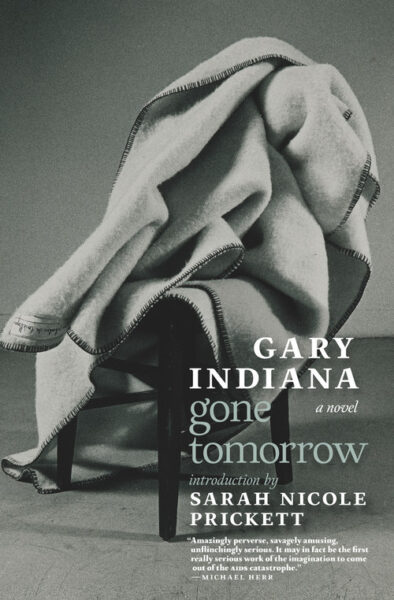 Gary Indiana Gone Tomorrow
Gary Indiana Gone Tomorrow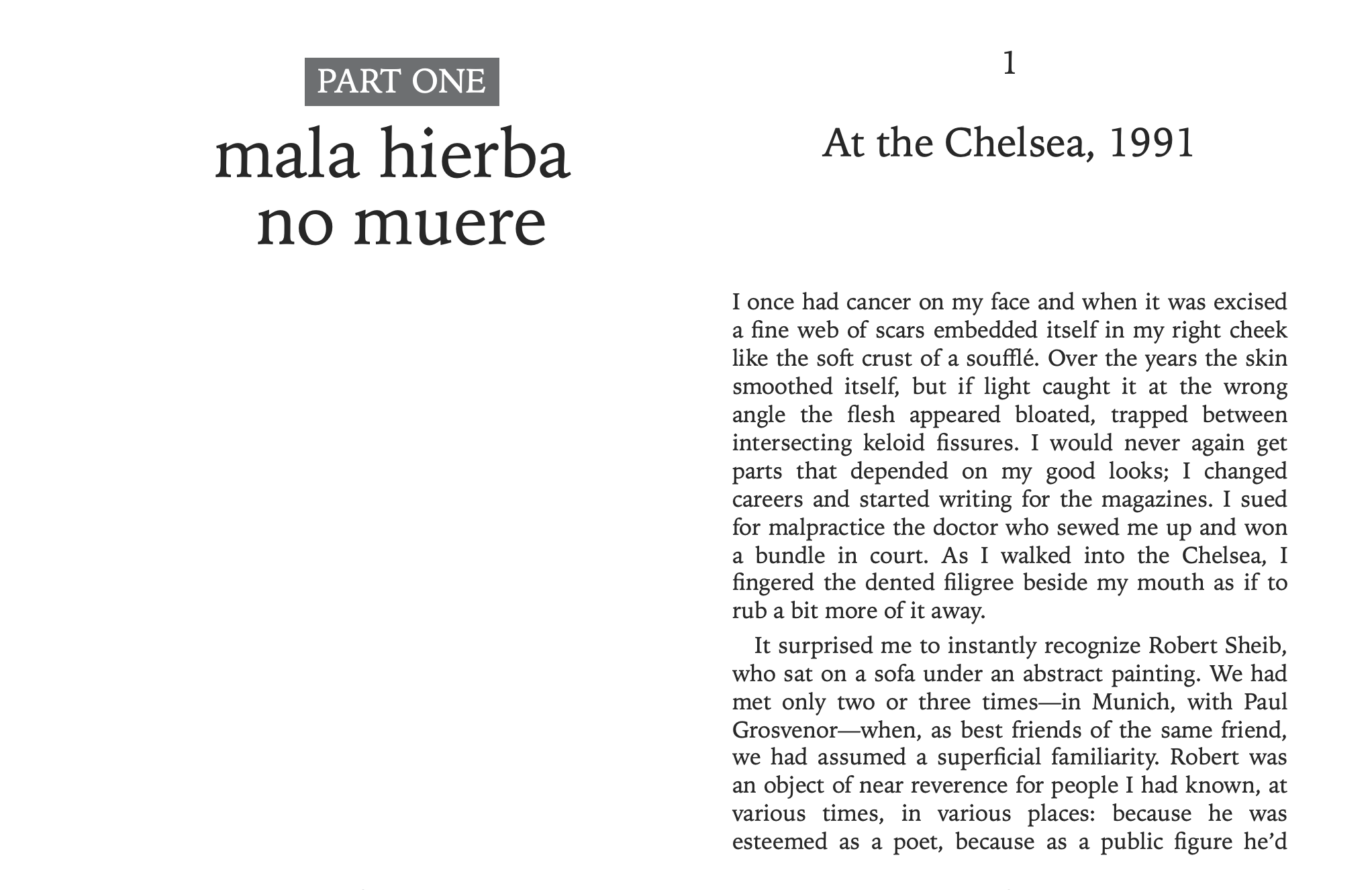
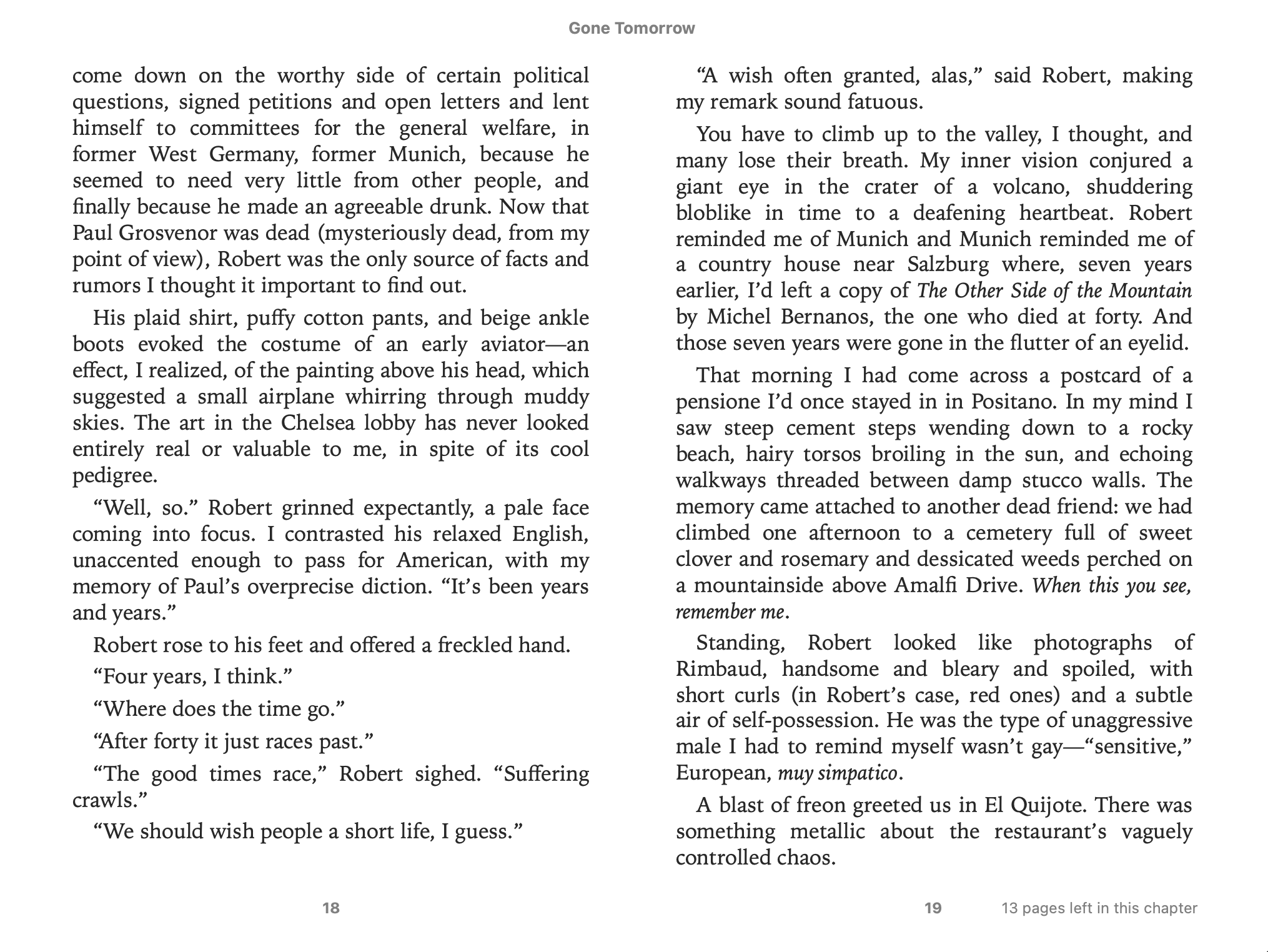
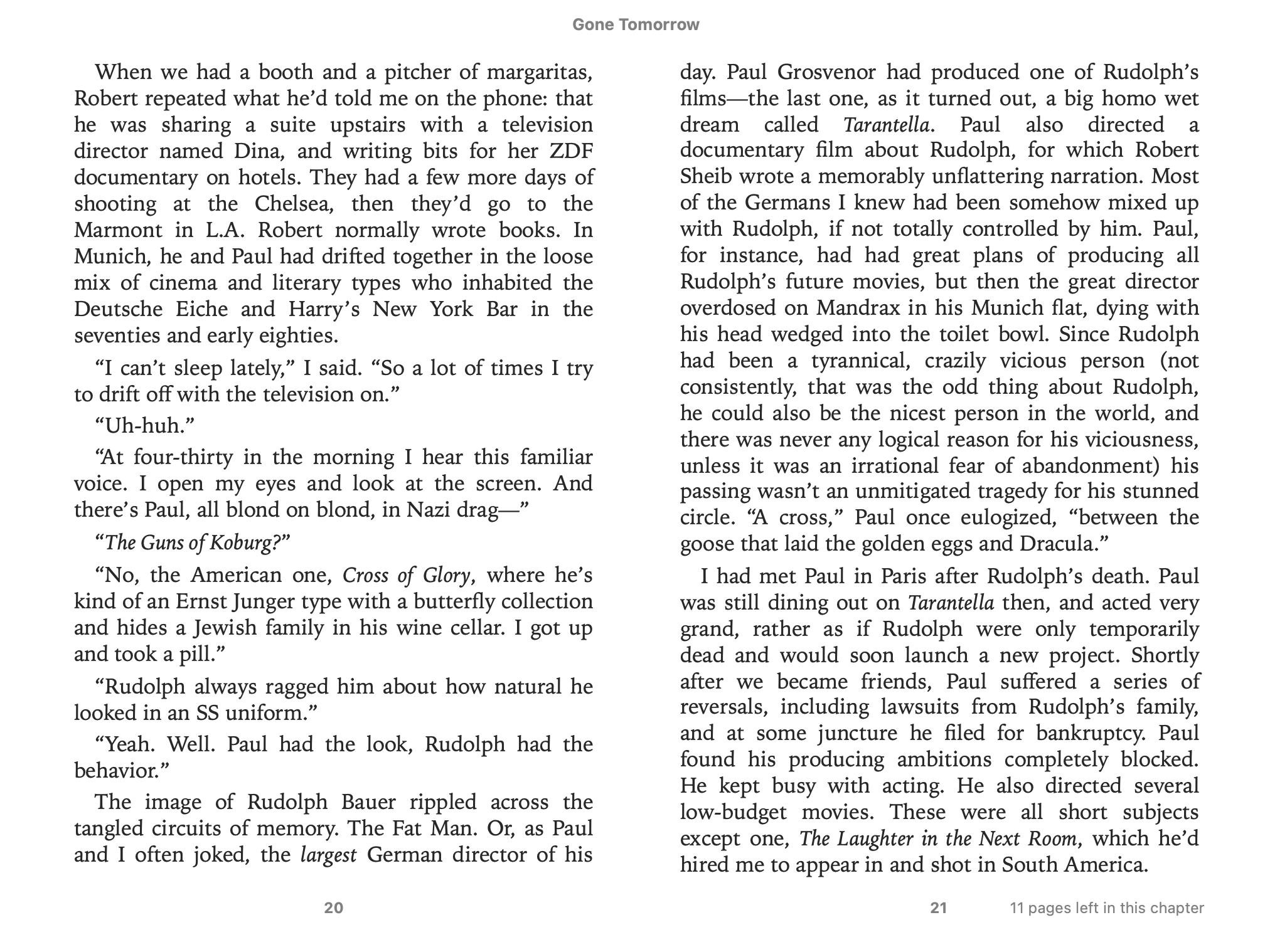
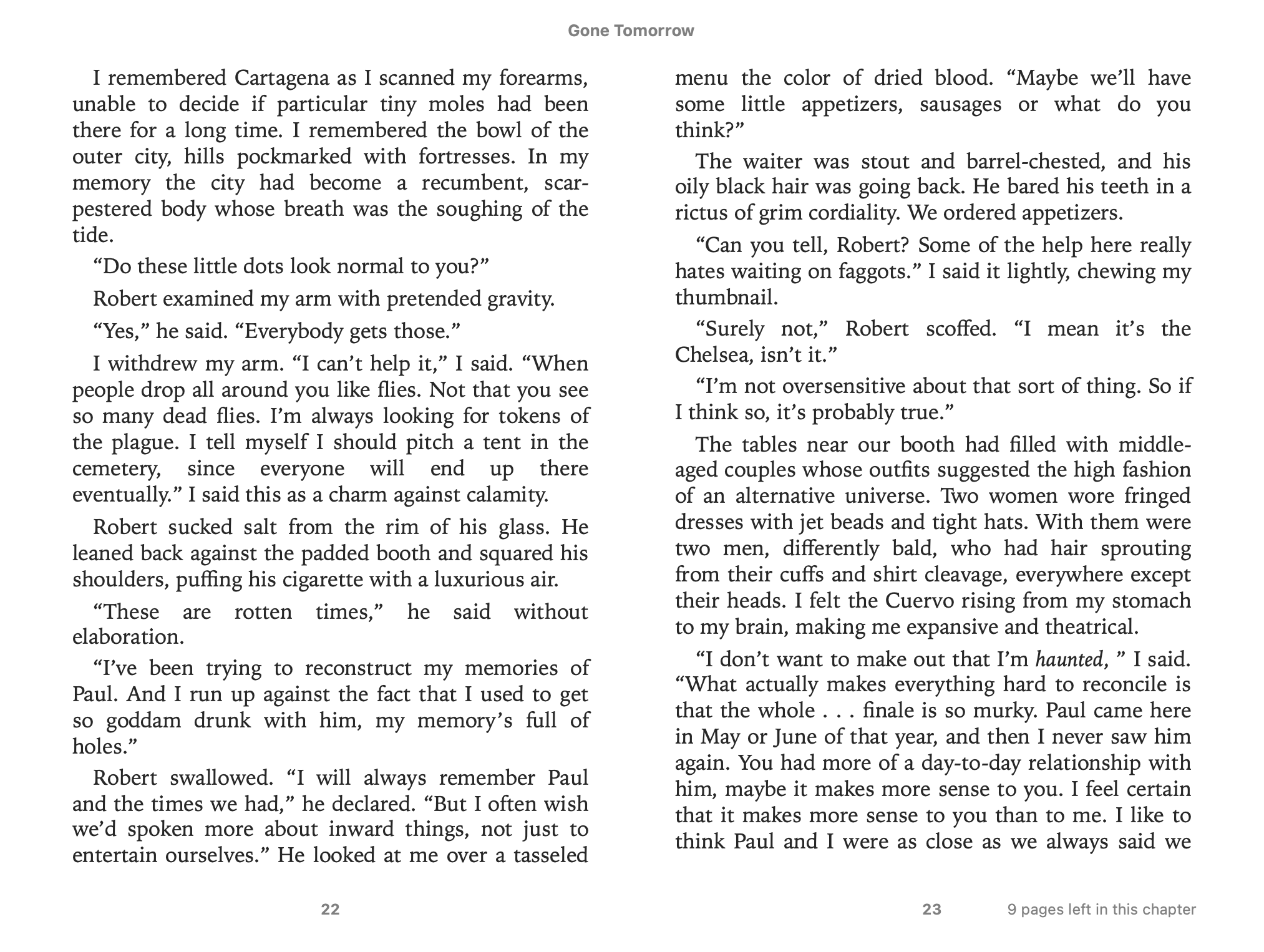
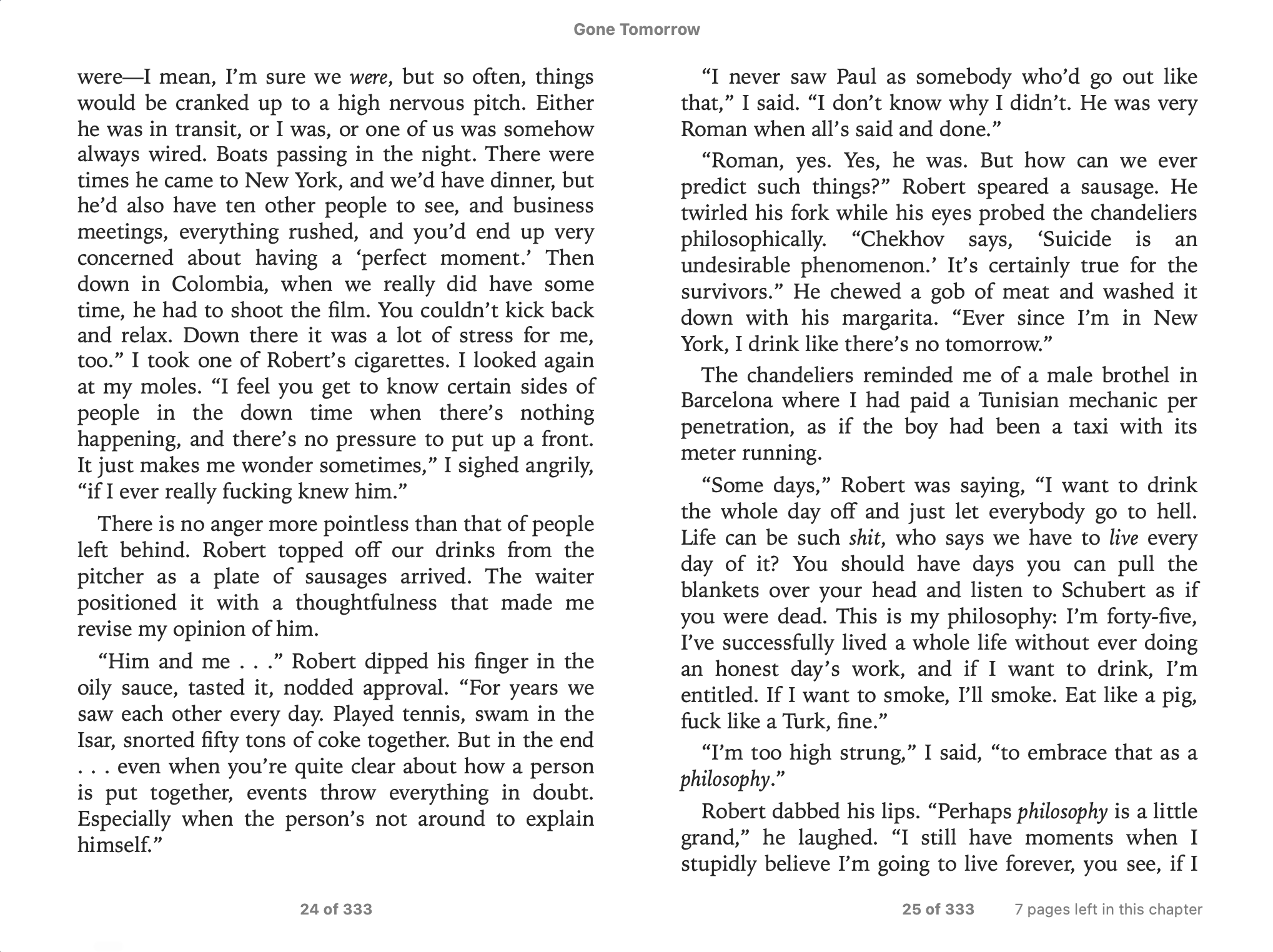
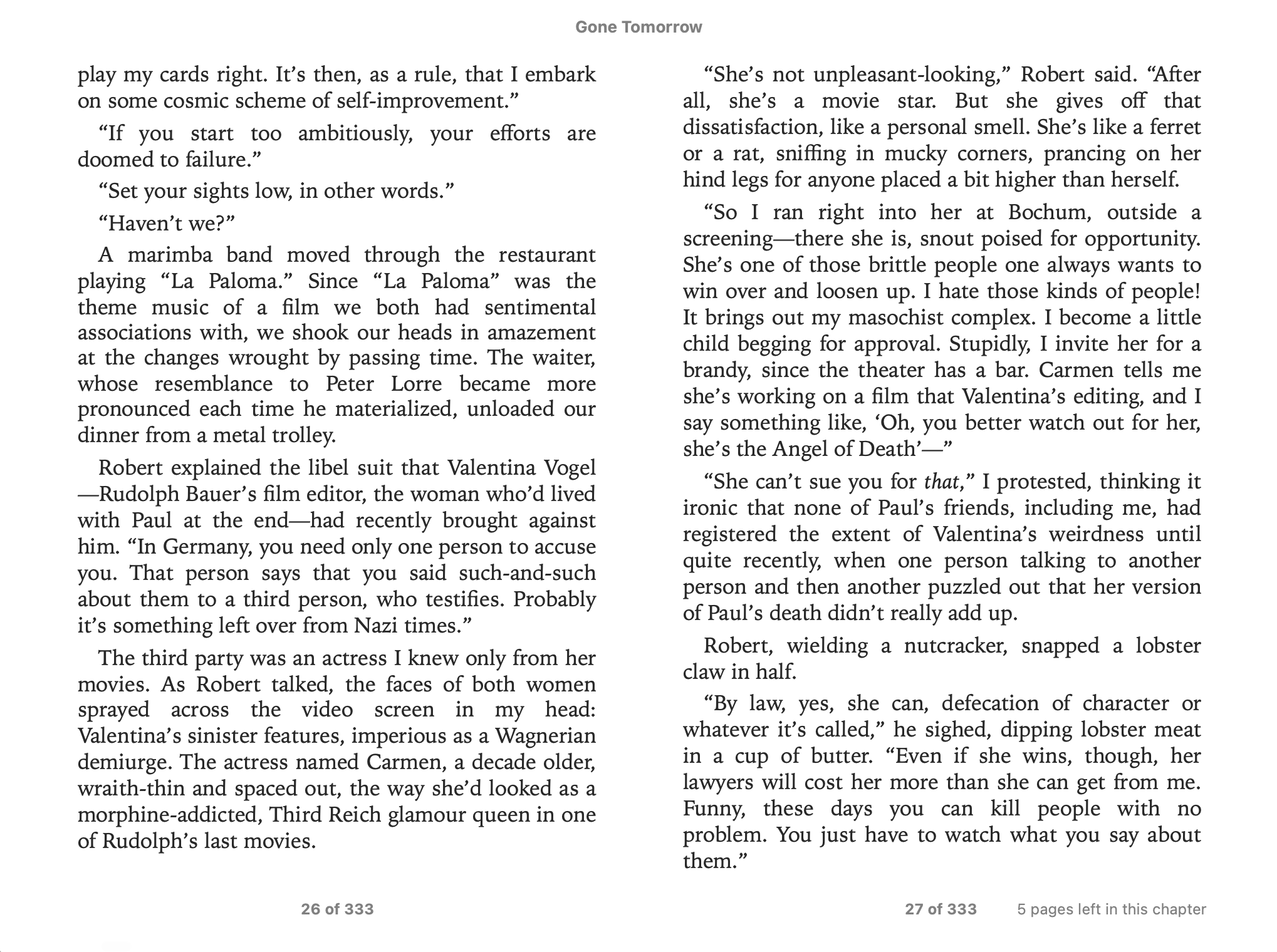
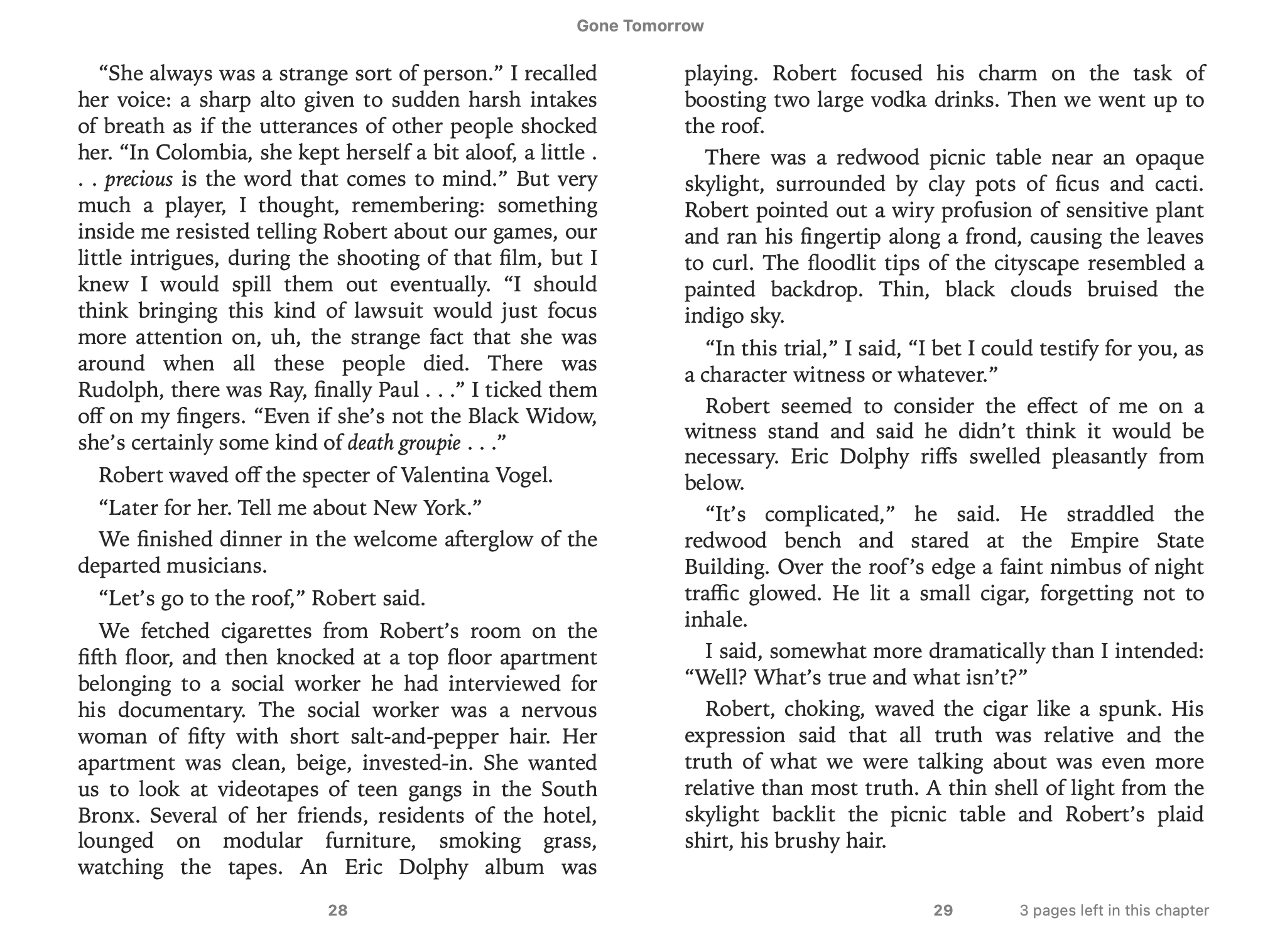
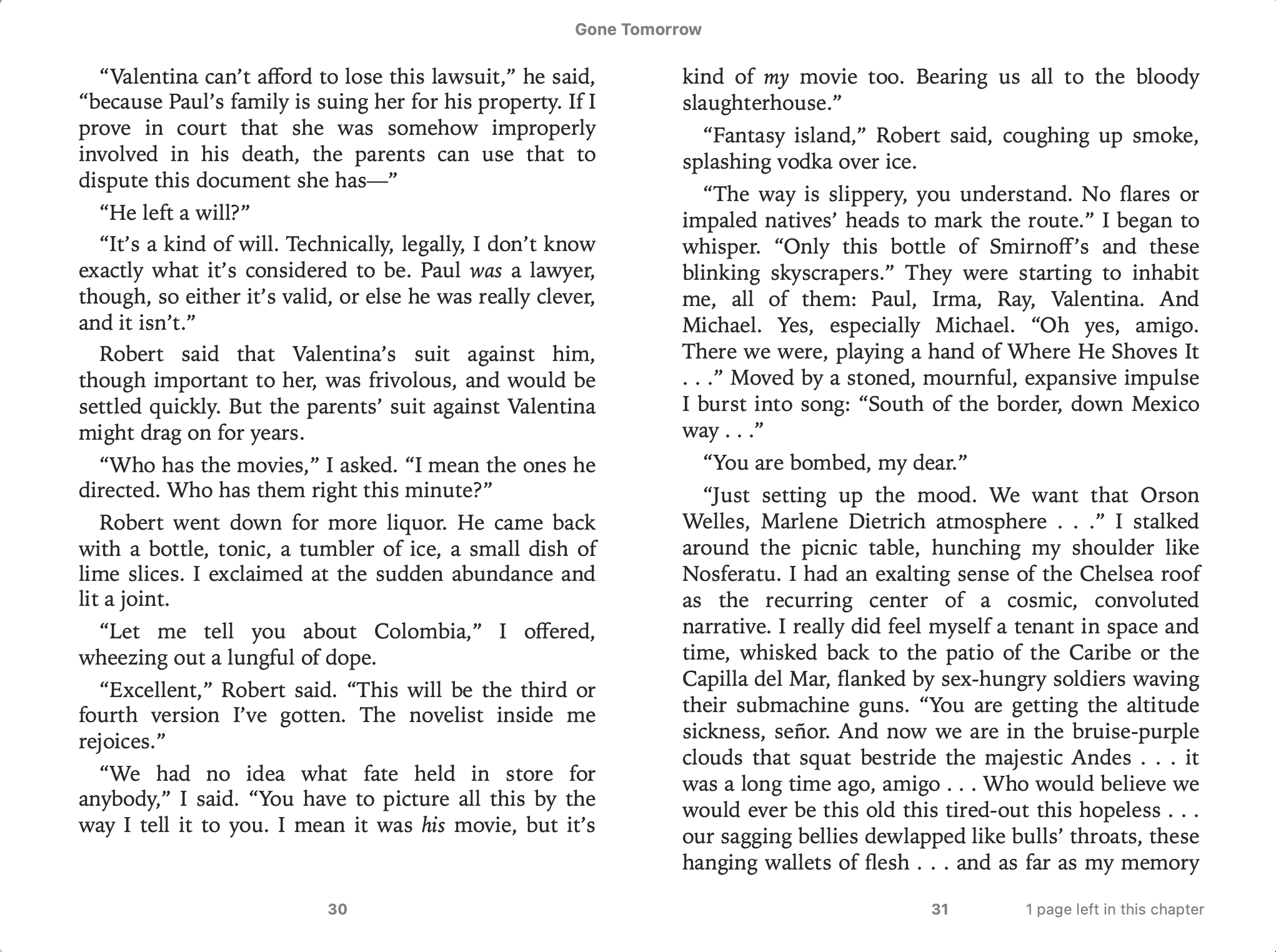
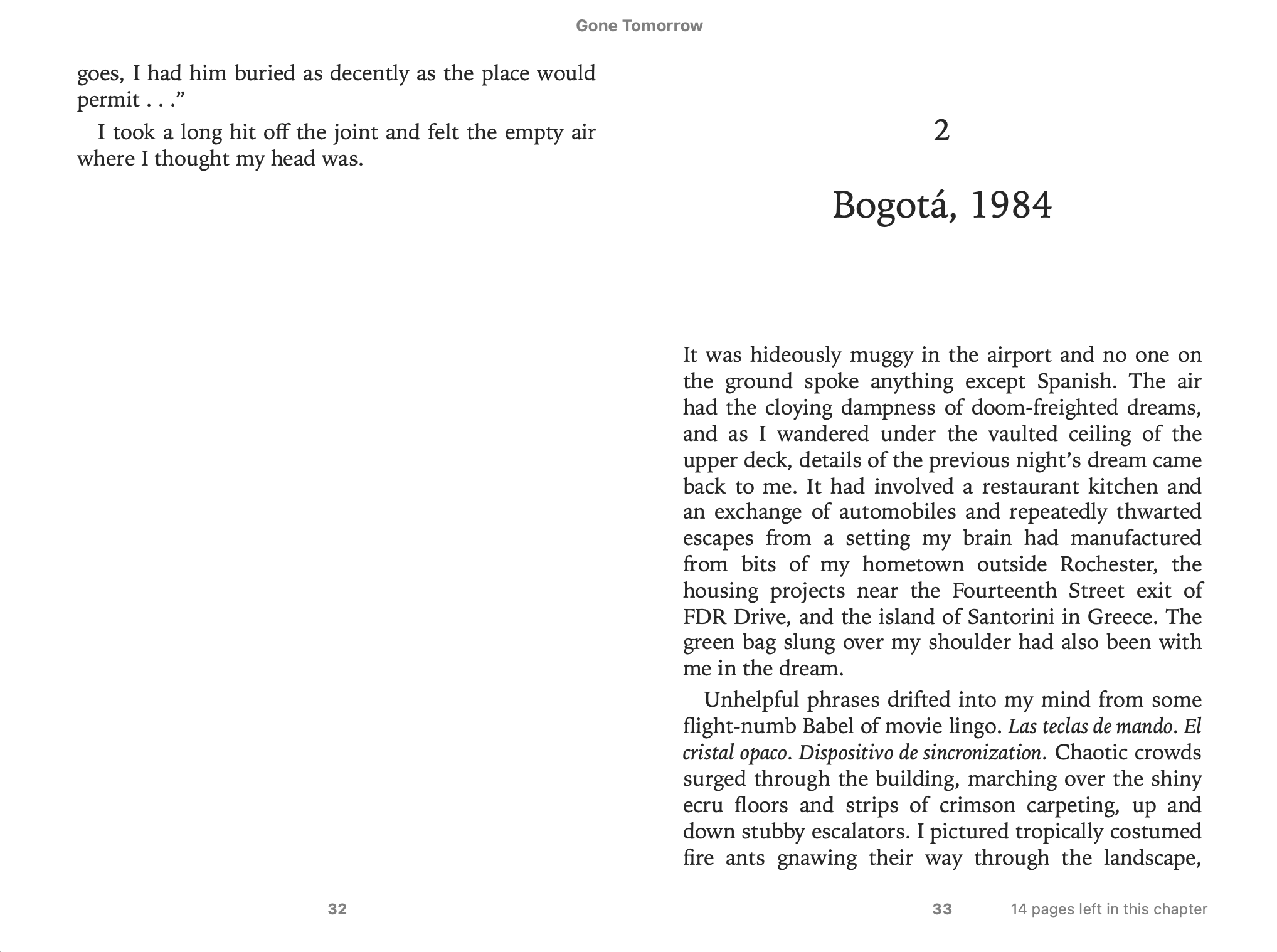




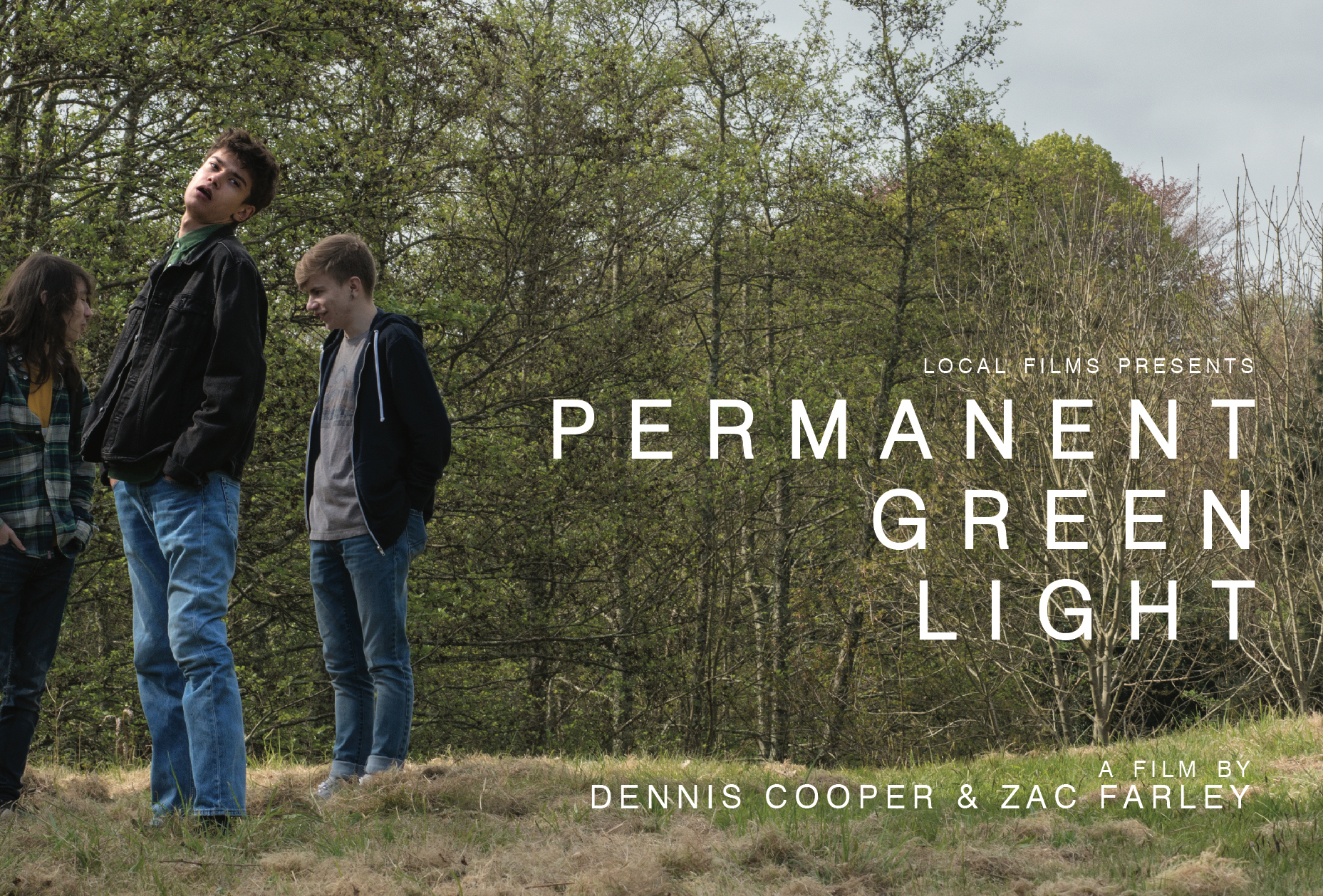 Now available in North America
Now available in North America 